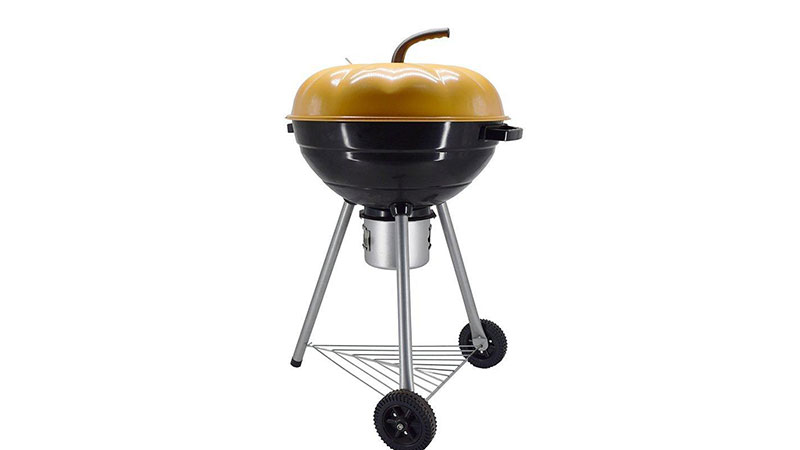Gas grills use either natural gas or propane as fuel and are the most popular type of backyard grills. They heat up quickly, can be operated easily, and require very little cleanup. Most gas grills are designed for propane use, but can be converted to use natural gas fairly easily.
While some gas grills have smoker boxes, charcoal grills are necessary to get a rich charcoal or smoked flavor.Natural gas-powered grills require that the natural gas line from your home be extended to your backyard. As a result, they have a higher upfront cost, but their operating costs are lower than propane grills and their location is permanent once the line is installed.
Require a natural gas line extended to your yard.
Safer than propane – they are less likely to leak as you don’t have to hook and unhook the gas frequently, and natural gas is easier to smell than propane so you can detect leaks earlier.
Propane-powered grills are portable and require propane tanks that need to regularly be replaced once the propane has been used.
Heat up quicker than natural gas.
Portable and easy to transport, can be used anywhere.
How to light a gas grill
As with all grills, clean the cooking surface before use.
Open the lid to prevent gas from building up in the cooking chamber.
To start a propane grill, turn the valve on the top of the tank counter-clockwise. To start a natural gas grill, turn one of the burners all the way up and push the igniter button. Use a fireplace match or lighter wand to start the grill if you don’t have an igniter button.
Turn on the other burners.
Close the lid and allow to warm for 15 to 20 minutes before cooking.

Tip: When cooking with any type of grill, periodically check the food temperature with a meat thermometer to ensure its internal temperature is high enough.
Safety: When using lighter fluid, read the directions for using proper amounts and don’t ever spray onto a lit fire or hot coals. Take caution any time you are around fire and make sure the area is properly ventilated.
Cheaper than gas-powered grills, charcoal grills are portable and easy to use. There are several ways to light a charcoal grill, but the first step is always to remove the grate and open any vents. Once the coals are lit, replace the grate and close the lid to allow the grill to heat up for about 15 minutes.
Start a charcoal grill using a chimney starter:
For low-heat foods or to use the grill as a smoker, fill the chimney ¼ of the way full. For burgers or hot dogs, fill ½ to ¾ of the way up. For high temperatures, completely fill the chimney with charcoal.
Place an accelerant like lighter cubes or crumpled newspaper at the base of the starter.
Light the accelerant.
Once the top coals begin to turn grey with ash, pour them onto the charcoal grate.
Start a charcoal grill using lighter fluid:
Arrange the charcoal in a pile on the charcoal grate. This will retain the heat and speed up heating process.Squirt lighter fluid on top of the coals and light immediately. Use 1.6 ounces of lighter fluid per pound of charcoal in your grill.Start a charcoal grill by lighting the charcoal directly:
Arrange the charcoal in a pile or pyramid on the charcoal grate and light. If using a bag of charcoal designed to be directly lit in the grill instead of emptying, light all four corners of the bag.
Charcoal Grilling Tips
Before getting the BBQ started, clean the grill grates using a grill brush, then coat the grates with a grill spray or vegetable oil. Repeat this process once you’re done grilling and remember to close the vents.
Once you’ve lit the coals and they’ve been warming for some time, check their color. The coals are ready for cooking when they turn grey with ash.
One of the keys to getting great results on a charcoal grill is to properly arrange the lit coals. When spreading the charcoal, remember that the thinner the layer of coals, the less heat they’ll provide and for less time. A thick and condensed layer will burn hotter and last longer.
Safety: When arranging the coals, leave a small area without coals to help reduce flare ups.
When grilling with direct heat, light the coals and spread them evenly in the grate area using a spatula or tongs To cook with indirect heat, place the lit coals on roughly half the charcoal grate area. The food can be seared over the coals and then moved to the empty area for slower, indirect cooking.
Copyright © 2025 Foshan Longzhao Industry Co., Ltd. | All Rights Reserved
Hello, please leave your name and email here before chat online so that we won't miss your message and contact you smoothly.